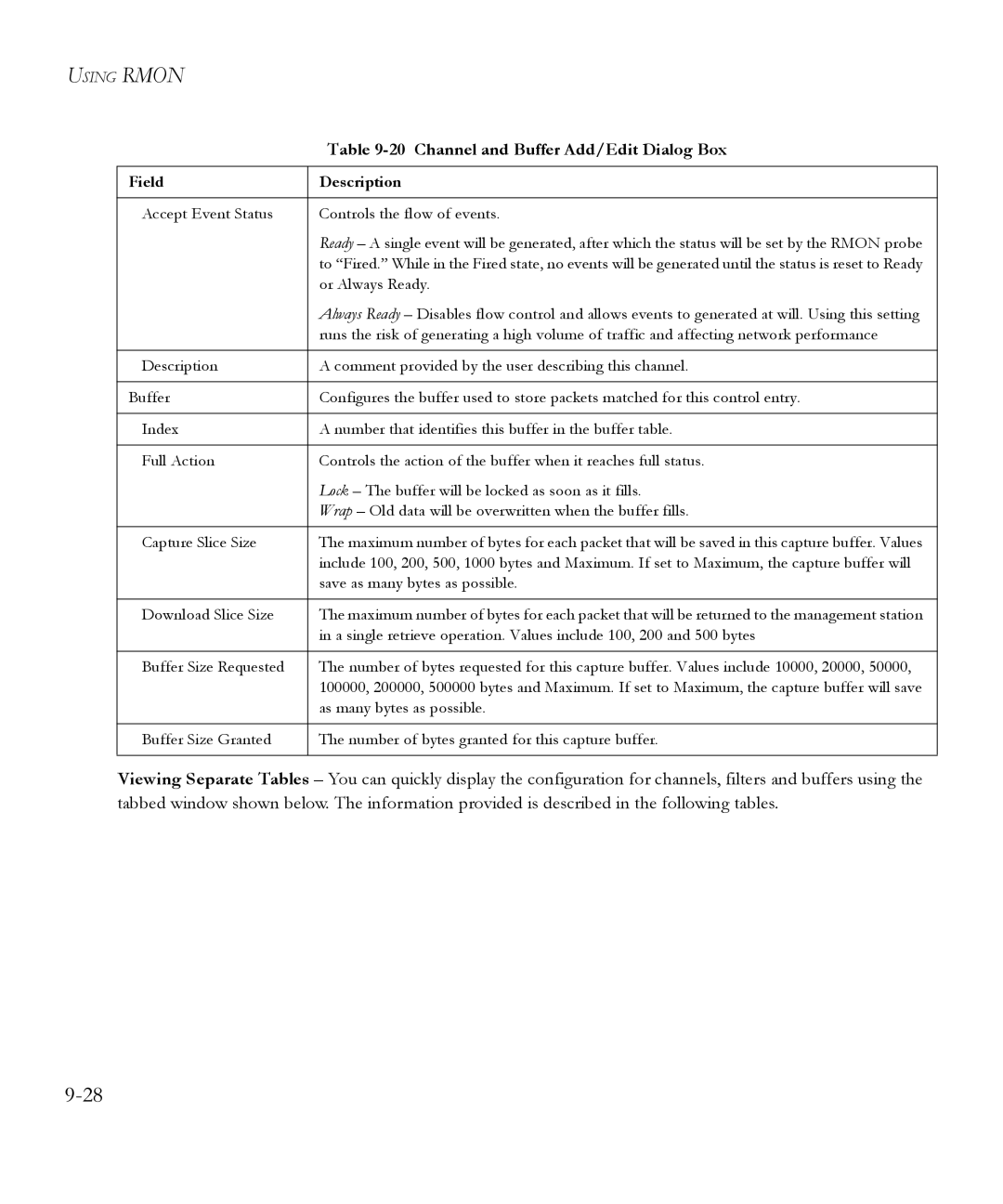USING RMON
| Table |
|
|
Field | Description |
|
|
Accept Event Status | Controls the flow of events. |
| Ready – A single event will be generated, after which the status will be set by the RMON probe |
| to “Fired.” While in the Fired state, no events will be generated until the status is reset to Ready |
| or Always Ready. |
| Always Ready – Disables flow control and allows events to generated at will. Using this setting |
| runs the risk of generating a high volume of traffic and affecting network performance |
|
|
Description | A comment provided by the user describing this channel. |
|
|
Buffer | Configures the buffer used to store packets matched for this control entry. |
|
|
Index | A number that identifies this buffer in the buffer table. |
|
|
Full Action | Controls the action of the buffer when it reaches full status. |
| Lock – The buffer will be locked as soon as it fills. |
| Wrap – Old data will be overwritten when the buffer fills. |
|
|
Capture Slice Size | The maximum number of bytes for each packet that will be saved in this capture buffer. Values |
| include 100, 200, 500, 1000 bytes and Maximum. If set to Maximum, the capture buffer will |
| save as many bytes as possible. |
|
|
Download Slice Size | The maximum number of bytes for each packet that will be returned to the management station |
| in a single retrieve operation. Values include 100, 200 and 500 bytes |
|
|
Buffer Size Requested | The number of bytes requested for this capture buffer. Values include 10000, 20000, 50000, |
| 100000, 200000, 500000 bytes and Maximum. If set to Maximum, the capture buffer will save |
| as many bytes as possible. |
|
|
Buffer Size Granted | The number of bytes granted for this capture buffer. |
|
|
Viewing Separate Tables – You can quickly display the configuration for channels, filters and buffers using the tabbed window shown below. The information provided is described in the following tables.
